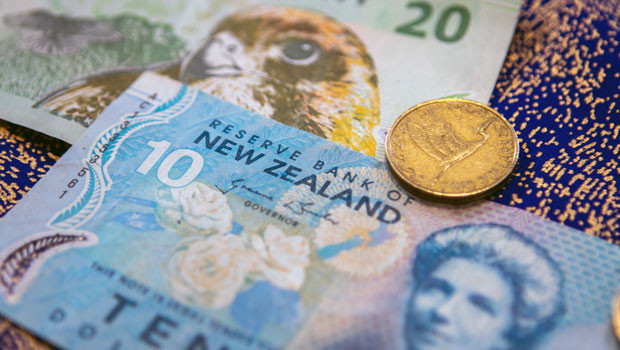Asia report: Stocks higher as traders watch Ukraine, RBNZ hikes rates

Stock markets in Asia managed gains on Wednesday, as investors continued to try and make sense of the latest developments on the Russia-Ukraine front.
Traders in Japan enjoyed the day off for the Emperor’s Birthday holiday, as the yen strengthened 0.03% against the dollar to last trade at JPY 115.04.
On the mainland, the Shanghai Composite was up 0.93% at 3,489.15, and the smaller, technology-heavy Shenzhen Composite jumped 1.75% to 2,337.58.
South Korea’s Kospi was 0.47% firmer at 2,719.53, while the Hang Seng Index in Hong Kong gained 0.6% to 23,660.28.
The blue-chip technology stocks were mixed in Seoul, with Samsung Electronics down 0.54%, while SK Hynix closed flat.
Chinese technology plays were in the green in Hong Kong, although volatility in the sector was expected to continue.
Alibaba was ahead 0.9%, while Meituan jumped 3.09% and Tencent Holdings eked out gains of 0.05%.
“Chinese stock traders are expecting Beijing to resume its crackdown on big technology companies in the country,” said AvaTrade chief market analyst Naeem Aslam.
“As a result, the nation’s three biggest tech companies, Meituan, Alibaba, and Tencent, have bled nearly $100bn over a period of just three days.
“Alibaba’s stock price is going to be relatively more volatile as investors expect a fall in company earnings.”
US president Joe Biden said overnight that Russia had started an “invasion” of Ukraine by ordering troops into rebel-held areas in the east of the country.
He announced sanctions on Russia’s sovereign debt as well as a number of its banks in response to Vladimir Putin’s latest actions in eastern Europe.
Oil prices were lower at the end of the Asian day, with Brent crude last down 0.85% at $96.02 per barrel, and West Texas Intermediate losing 1.06% to $90.94.
In Australia, the S&P/ASX 200 rose 0.62% to 7,205.70, as the hefty financials subindex squeezed out growth of 0.34% for the day.
The big four banks were in a mixed state in Sydney, with Australia and New Zealand Banking Group down 0.93% and National Australia Bank off 0.46%, while Commonwealth Bank of Australia added 0.68% and Westpac Banking Corporation advanced 0.55%.
Across the Tasman Sea, New Zealand’s S&P/NZX 50 eked out gains of 0.16% to 12,134.42, as the country’s central bank hiked interest rates, and laid the foundation for further rises.
The Reserve Bank of New Zealand added 25 basis points to take the official cash rate to 1%, in its third interest rate increase since October.
It also updated its forecasts, and was now seeing the rate reach 3.3% by the final quarter of 2023, compared to the 2.6% peak it was pencilling in back in November.
“In New Zealand, underlying economic strength remains in the economy, supported by aggregate household and business balance sheet strength, fiscal policy support, and continued strong export returns,” the RBNZ’s Monetary Policy Committee said in its statement.
“However, some short-term economic disruption is expected given the current growing Covid-19 health challenge.
“The high vaccination rates across New Zealand will assist significantly to reduce this disruption.”
Headline consumer inflation was “well above” the bank’s target range, the MPC added, but it was expecting it to return towards the 2% midpoint in the coming years.
“The near-term rise in inflation is accentuated by higher oil prices, rising transport costs, and the impact of supply shortfalls.
“These immediate relative price movements risk generating more generalised price rises, especially given the current domestic capacity constraints.”
In October, the RBNZ became the first central bank of a G10 currency to raise interest rates in the wake of the Covid-19 pandemic, which saw interest rates slashed across the world in the early parts of 2020 in a bid to underpin economic activity.
“The most notable shift in the bank's economic forecasts was the uplift in its CPI forecasts,” said analysts at TD Securities, noting they were lifted across the projection horizon - particularly in 2022 - by around one percentage point, and by about 0.2 points thereafter.
“The unemployment rate forecast was lowered versus November forecasts, while the NZ dollar is expected to be mildly weaker.”
TD Securities also noted that while the official cash rate remained its key monetary policy tool, the RBNZ indicated it would rundown its quantitative easing bond holdings via bond maturities and managed government bond sales to the New Zealand Treasury’s debt management function.
“There will be no reinvestment of maturities with bond sales expected to be NZD 5bn per fiscal year - around NZD 100m per week.
“We expect these sales to be easily absorbed by the market.”
The down under dollars were both stronger on the greenback following the interest rate hike in New Zealand, with the Aussie last ahead 0.62% at AUD 1.3767, and the Kiwi advancing 0.92% to NZD 1.4717.